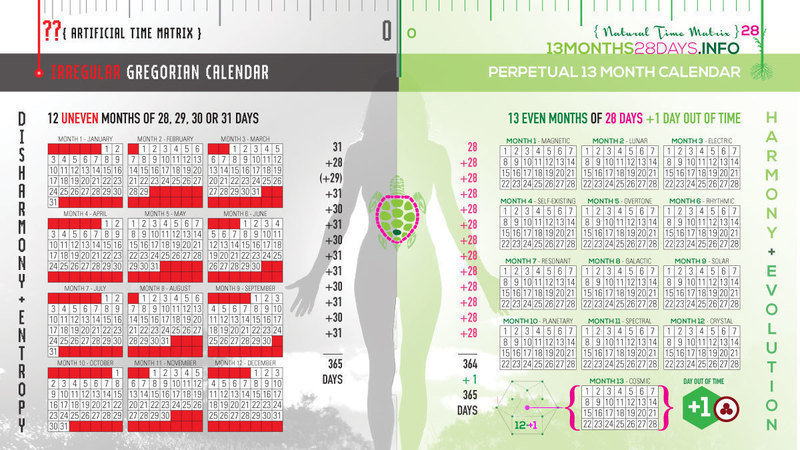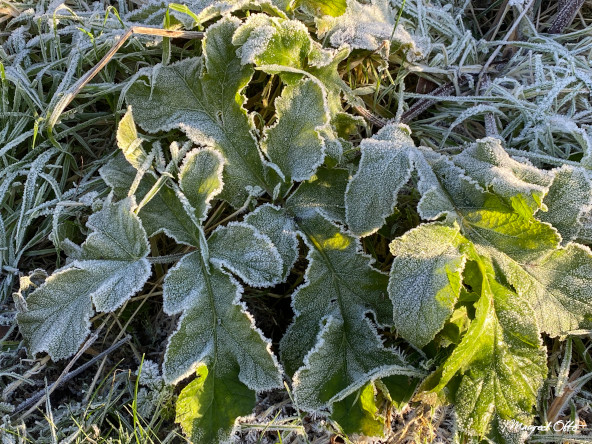Today is the first day of a new year, 2023, worldwide. That’s why I decided to place a few pics with winterfrost on green as we’re just having our first month of winter overhere in the northern hemisphere (where the author of this article is at), but to those reading this in the southern hemisphere, Happy Summer! Now does this day resemble our cosmic calendar somewhat? Actually, it doesn’t, this is just a random day for our calendar, as the true turning point of the year and seasons worldwide would be around the solstices and equinoxluxes.
So the question rises, what would happen if we synchronized our daily and annual calendar with celestial events such as the equinox and solstice? How would such calendar look like? It’s interesting to ponder on this, and here are some of the reasons.
SPRING AND AUTUMN EQUILUXES
The equinox, or equilux if you will, happens twice a year on our planet sometime between March 19 and 21, and September 21 and 24. At these celestial constellations, day and night are of equal length all over the planet, except for the North- and Southpoles. In the Northern hemisphere, the March equilux marks the beginning of spring while autumn starts in the Southern hemisphere, and vice versa around the 21th of September.
SUMMER AND WINTER SOLSTICES
The two solstices our planet has a year, take place sometime between June 20 and 22 in the Northern Hemisphere (the longest day with the sun directly above the Tropic of Cancer) and December 20 and 23 in the Southern hemisphere (the longest day with the sun directly over the Tropic of Capricorn). The solstice is the peak of a radical exposure to daylight, while at the Equator the solstices are barely marked at all. This year the first solstice is the summer solstice on wednesday the 21th of June 2023 at 16:57 CEST, the start of summer in the Northern hemisphere and ‘winter’ or rainseason in the Southern hemispere. And the second is the winter solstice on wednesday the 21th of december 2023 at 22:48 CET or 21:48 UTC.
WHEEL OF THE YEAR
The two equinoxes together with the two solstices form four ‘sky points’ in our Wheel of the Year.
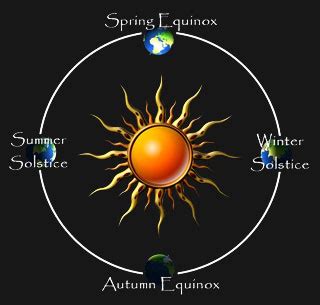
Now this is just a symbolic overview as it does not represent the true celestial constellation. Nowadays there’s a lot of discussion about the shape and movement of our planet Earth in our universe. There are many theories about Earth as a globe often depicted with graphical illustrations, and the same for Earth as being flat, like some sort of disk.
There are also discussions about what our solar system looks like, whether the sun is in the center or not, and so on and so forth. But there is obviously a natural law to the motions of our celestial bodies, and the equiluxes and solstices are proof of that because these time markers in the sky return year after year, and have done so for ages.
After all, these time markers are recorded worldwide four times a year in many grand historic structures such as the pyramids and temples in Egypt, the enormous Machu Picchu mountain construction and temples in Peru, the Stonehenge circles in England, which all have something in common: they are precisely aligned structures that capture the light of the solstice for about 17 minutes four times a year in some sort of stone chamber structure designed for that purpose, like the minute hands of a cosmic clockwork, of which we understand little today.
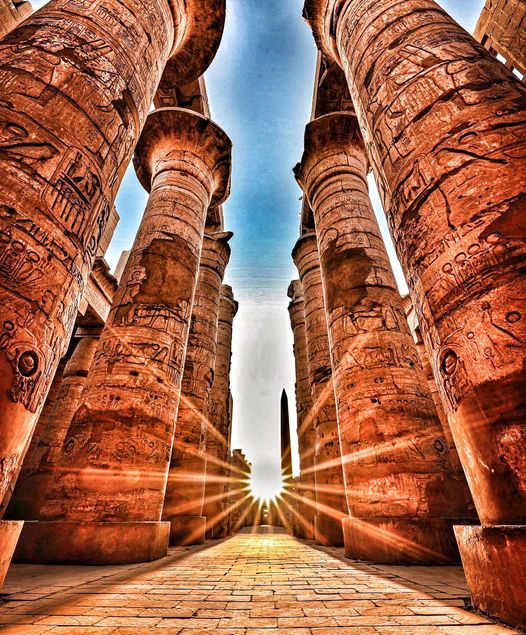
“Temple of Karnak Egypt at December Winter Solstice. As the sun rises, the first rays of light line up perfectly with a long hallway lined with columns and statues. It is an awe-inspiring sight and one that is definitely worth visiting.”
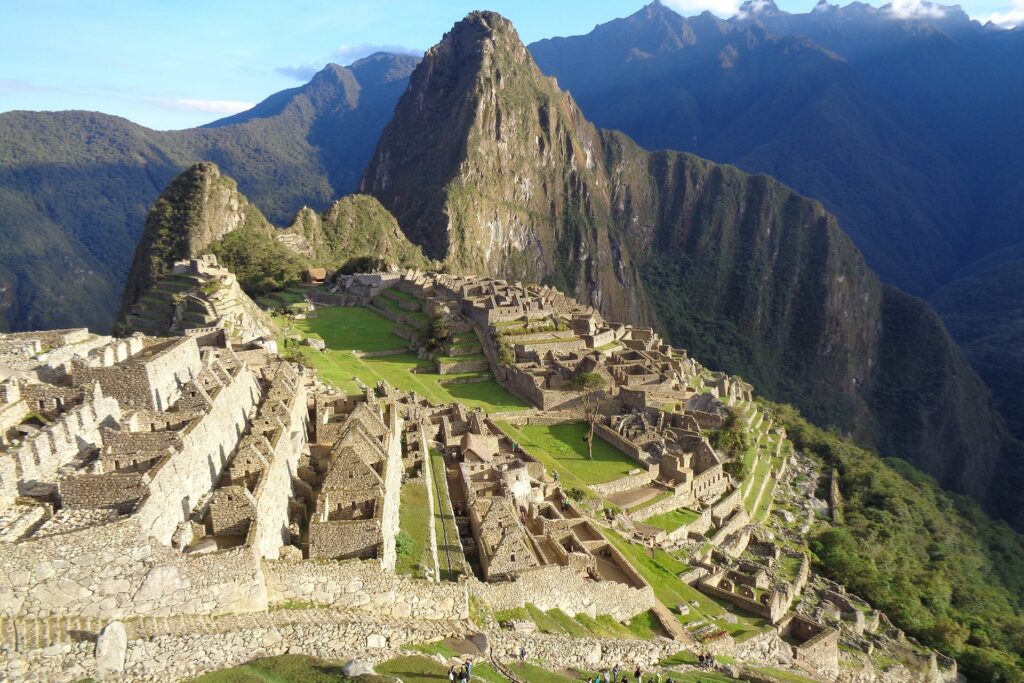
The Machu Picchu mountain construction and city and temples in Peru
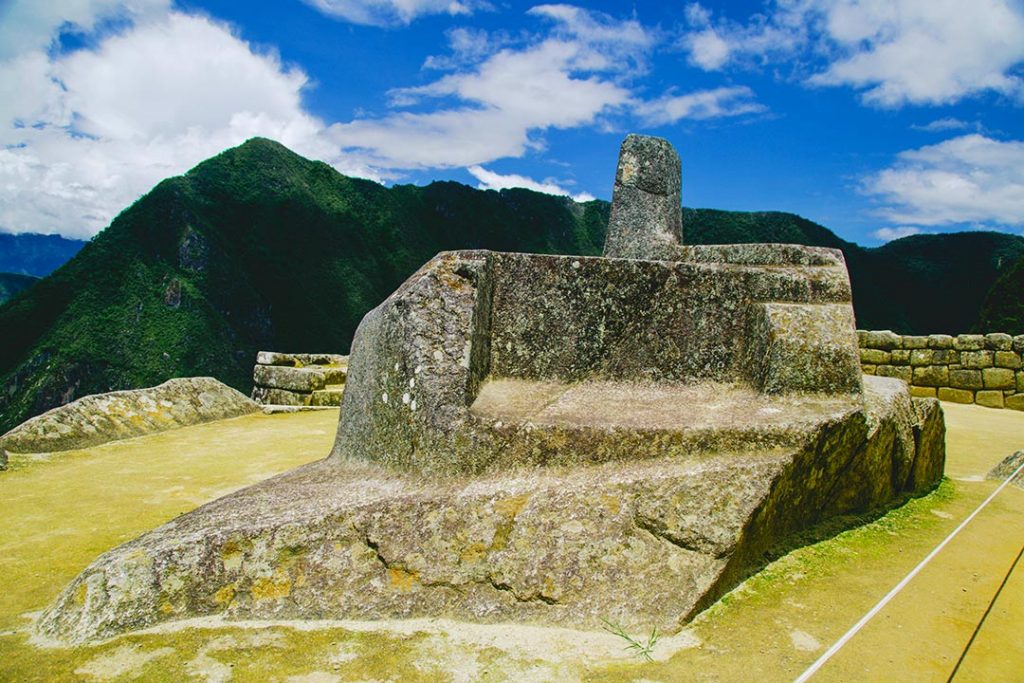
The special stone ‘Intihuatana’ on top of the Machu Picchu mountain temple that catches the sunlight at both equinoxes, and thus functions as an astronomical clock. It’s a four-sided stone and each point represents the north, south, east and west. There are also other steps, dents and shapes on the stone, which all indicate other uses of the stone. The sun sits directly above the stone on the two equinoxes, preluding spring and autumn in both hemispheres of our planet! At these special moments, the sunbeams do not cast a shadow on the stone, which means it is designed with ultimate precision. On the solstice in December (when its summer in Peru) light from the sunrise projects a triangle on the stone, which reflects two circles on the ground. Where did these people get their knowledge and building techniques from? This truly is a mystery!
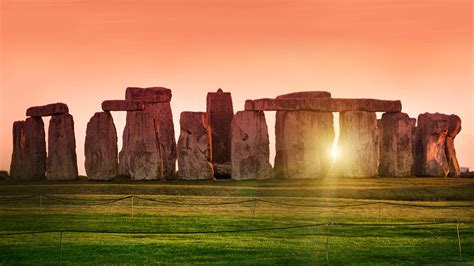
The Stonehenge circle in England. Not sure if this is an accurate picture, as the stonehenge structures look different on several pictures, such as the capstones. There are also many illustrations of ground maps and floor maps on the internet which show how the culmination points of both the sun and the moon movements are mirrored in the stones throughout the year. Also the time of when these stones were put in formation isn’t clear. Probably these stem from the new stone age, and were build by Lemurians 12.000 years ago, who travelled the world with their advanced navigation skills, which is also noticable in the vast knowledge they had about the constellation and movement of the celestial bodies in our solar system.
Back to our current day and age, we might want to ponder next on when is the actual start of a new year in this celestial Wheel of the Year? Or what would be the best start of a new celestial cycle to connect to the beginning of our calendar?
A NEW YEAR
Logically, a new year begins with spring. Because with the increase of sunhours and warmth, spring is where all seeds in the soil will sprout and start their new lifecycle. Spring is also the season when most animal offspring is born, e.g. from cow’s and sheep’s calves, to all bird species building nests. Nature expands, trees and plants start to blossom, and the renewal of life force energy is exuberant. If we accept this logic for what it is, this means that on our planet, there are actually two dates a year where a new year starts, alternating springs in the Northern and Southern hemispheres..
TWO VERNAL STARTING POINTS
So in one planetary year the two equiluxes form on average two vernal starting points. Vernal translates to ‘new’ and ‘fresh’, which mark the start of spring and thus respectically a new year on the two appointed planetary hemispheres. These are the two Spring equiluxes in March and September.
RESET NEW YEAR’S DAY
So if we would want to reset our real first day of the year to the beginning of spring, it would be around the 21th of March every year for the Northern hemisphere, and around the 21th of September for the Southern hemisphere. But to which of the two equiluxes should we reset the first day of our worldwide calendar? Should it be the march equilux or the september equilux? Probably it is in september somewhere.
ONE SINGLE ANNUAL NEW YEARS DAY
The first of januari of our current calendar isn’t connected to any celestial event. Ten days prior to january 1th, we’re having the winter solstice around the 21th of december in the Northern hemisphere. Nowadays there’s a festive season worldwide right after the Northern winter solstice with Christmas and one week later the international new years celebration.
Some celebrate the december solstice in the Northern hemispere as the days after the solstice will be lenghtening again. It is the shortest and thus darkest day of the year in which a cosmic culmination point is embedded. The solstice on both hemispheres can be compared to the white dot in the large black half of a yin and yang symbol. At the same time, summer starts in the Southern hemisphere, the black dot in the other large white half. This turning point in both hemspheres can be celebrated, one for the beginning of winter and the returning of the light after the shortest day, and one for the start of summer at the longest day, which is a reason to celebrate as well!
YULE
The celebration of Yule was connected to the december winter solstice in the Northern hemisphere. Traditions arose with decorating houses and interiors with natural ornaments, such as (what we now call) ‘Christmas’ wreaths and -trees, mistletoes and holly branches, accompanied with the festive preparation of special dishes. These could contain ingrediënts from the autumn harvest canned and preserved for the cold winter months and animal products from hunting or domesticated animals. The population and farmers had a winter break from working the land as in wintertime nature doesn’t produce and the ground was often covered in snow or frozen.

SYSTEM SLAVES
Nowadays for our food supply we’re dependant on digital payments in supermarkets which we can only enter through automatically opening steel gates and leave through locked steel gates that only open with the pin payment code from our receipt. The same with our railway system by the way. Now here’s a question: Who the fuck thought this all up and designed it?
If you lost your receipt you’re stuck, it’s a scary feeling. A loud bleep lets you know the scanner has recognized the code, which might give immediate relief for you can leave as the gates do open. To hear these bleeb sounds is annoying by the way, apart from all the wireless electromagnetic energy that these machines and other equipment produce, as well as all shopping people with their mobile phones.
‘FRESH’ FOODS
Lots of fresh foods that are sold in these supermarkets are grown with artificial fertiliser in depleted soil, are chemically sprayed with a plethora of different chemicals, and the so called ‘organic’ fresh produce is wrapped in plastic. How evil does this get really? We’ve lost our connection with growing our own food, creating good quality soil, and the joy of living on the land completely and freely. Most people don’t even know how their food is grown, where it comes from, how it has been produced and what labour went into it. How sad it is. And most people don’t even realise how far we have derailed from normalcy, of being connected to a natural lifestyle that suits our physical bodies. Here’s the word: Natural.
HAPPY NEW YEAR TWICE
Thus the winter solstice isn’t the beginning of a new year as a lifecycle. The real new year begins at the start of spring at the March equinox for the Northern hemisphere, this year on the 20th of march 2023 (also for the next 20 years).
And for the Southern hemisphere spring starts at the 20th of september 2023.
Thus two happy new year celebrations every year! The idea might seem odd, but it really isn’t. Because when one part of the world is celebrating the start of a new year, the other part might celebrate for example thanksgiving, for the start of autumn with its harvest, and half a year later for both hemispheres its vice versa.
WISHING EACH OTHER HAPPY NEW YEAR OR THANKSGIVING
Man on both hemispheres could wish each other well with each others celebrations that take place at the same time, which uplifts the collective field globally as we’re all connected, either in international circles of family and friends and acquaintances, or in the spirit field. At least such celebrations would make sense, wouldn’t it, as it will connect us back to our cosmic cycles, our origins we seem to have lost.
By reconnecting to our cosmic calendar and thus remembering natures cycles, also our cycles of growing and harvesting food, we would experience our cosmic connection on a much deeper level!

HOW COME?
Thinking once more about the gigantic structures worldwide, such as the pyramids in Egypt, the Macchu Pichu and Stonehenge, how come we know so little about the civilisations that built them? How come we have lost this knowledge of tuning in with the cosmic cycles that we’re in? How come our calendars of our current day and age are not attuned to that? How come only few people celebrate these celestial events nowadays? How come we aren’t paying more attention to this enormous heritage?
SYNCHRONISE OUR CALENDAR
But what if we would alter our calendar and synchronise it with the solstices that occur twice a year, at the very moment when some sunbeams are reflected in the mysterious megalitic majestic structures just mentioned?
How would our calender look like, how many days does every year contain, and in how many months or episodes could it be devided? The word month stems from ‘monate’ or ‘maand’ in Dutch language, which contains the word ‘maan’ which is te Dutch word for moon. Currently we have one moon for every month with an occasional blue moon but none of them are on the same calendar days every month nor year. This makes no sense really! More on a moon calendar will follow later. Update, there’s a proposal for a new cosmic harmonic calendar, based on our moon cycle. See update below this article.
DIFFERENT CALENDARS
Many people have studied our calendars, both laymen and scholars, and they’ve studied also ancient ones such as the Mayan calendar or the Chinese zodiac system and astrology, all of which I know very litte about. It is a university level study. The Chinese astrology is based on the lunisolar calendar (both the moon calendar and sun calendar), and the time calculation after year, month, day, as ‘shichen’ (double hour): ‘Shi’ is a time, season, period, hour, era or age and ‘Chen’ is an Earthly Branch, part of life.

The ancient Chinese referred to 12 segments of time after the 12 months and the 12 corresponding animals. The day was divided into 12 two hour periods and related to the attributes of these animals, much like the western zodiac. But different. These would all vary through the several dynasties.
DIFFERENT MONTHS
Our calender currently contains 12 months as well, but it didn’t used to. In reality there are 13 moons thus months in one solar year. But the old Roman calendar started with 10 months which began in march (!), september being the seventh month in Latin ‘sept’ = seven, october = eight ‘oct’, november = the nineth ‘novem’, and december the tenth ‘decem’. The ‘ber’ at the end of these numbers of these four months probably refers to the autumn/winter episode up until the winter solstice. After this the first two months january and february end with ‘y’, probably referring to the 2nd half of winter after the solstice. The month march named differently as the first month of the new year. Just guessing. It would be interesting to study this further!
AVERAGE SEASON LENGTHS
Fact is that the episodes between te equiluxes and solstices slightly differ in length every year, with a maximum difference of 4.6 days. However, it is great to have four celestial marked seasons a year, even although they slightly differ from each other, but might also differ every year:
The March equilux to June solstice: 92.8 days
The June solstice to September equilux: 93.6 days
The September equinox to December solstice 89.8 days
The December solstice to March equinox: 89.0 days.

ALTERING BIRTHDAYS
Now we might also ponder on how would we adhere our birthdays to equiluxes or solstices? The days could be counted from the celestial events onwards, and also from which hemisphere the celestial event is. One does never have to alter the date of birth one was born though! If one has a birthday at the end of a season that is occasionally out of time in the following years, one might want to connect with the latest day of the particular season one was born in. Just as we now have with the last day of the leap month of February. It might take some time to get accustomed to more of these days though!
THE NUMBERING OF THE YEARS
And then finally, the current numbering of our years is based on the supposed time of Jesus Christ’s birth, which would therefore at this moment of writing on the first of January be about 2023 years ago, and is commemorated by Christians every year at Christmas on December 25th. However, there are many different opinions about the accuracy of this date, according to some He could very well have been born at the end of summer, which is probably late August or the beginning of September.
So was His time of birth artificially connected to the returning winter solstice event around the 21th of December? As to symbolise the return of His light to our plane, connected to the return of our sunlight with the lengthening of the days afterwards? Could be.
WHAT’S NEXT?
Different timezone systems. We could adjust our clocks internationally to the celestial events. Other than that, no more words for the confusing different time zones we’re in now that are artificially installed.
KINDA CONFUSED
Fact is many people are kinda confused nowadays about what they’re actually celebrating this time of the year, from fairytale stories of the red nosed rendeer who flies Santa Claus in his slee through the skies, as well as collectivly growing & felling & decorating millions of fir trees on a vast scale, as well as the international church celebration of the birth of the Aforementioned.
PAY RESPECT AND GIVE THANKS TO
Long story short, lets strive for a reset of our daily, monthly and annual calandar to a more meaningful attunement to our seasonal and cosmic cycles, with respect to our knowledgeable forebearers, who have mirrored glimpses of our cosmic clockwork by building majestic megalithic structures on our planet Earth, which’ll last till the end of times.
Update September 2023, Just discovered a petition for what I would call the
NEW HARMONIC CALENDAR and signed it. Probably it could also be called ‘Natural or Universal or Cosmic Harmonic Calendar’. It is based on the 13 moons in one solar year with an extra ‘day out of time’ on july 25th.
My number of signing is #12116
I made a screenshot of the previous number and also after I signed:
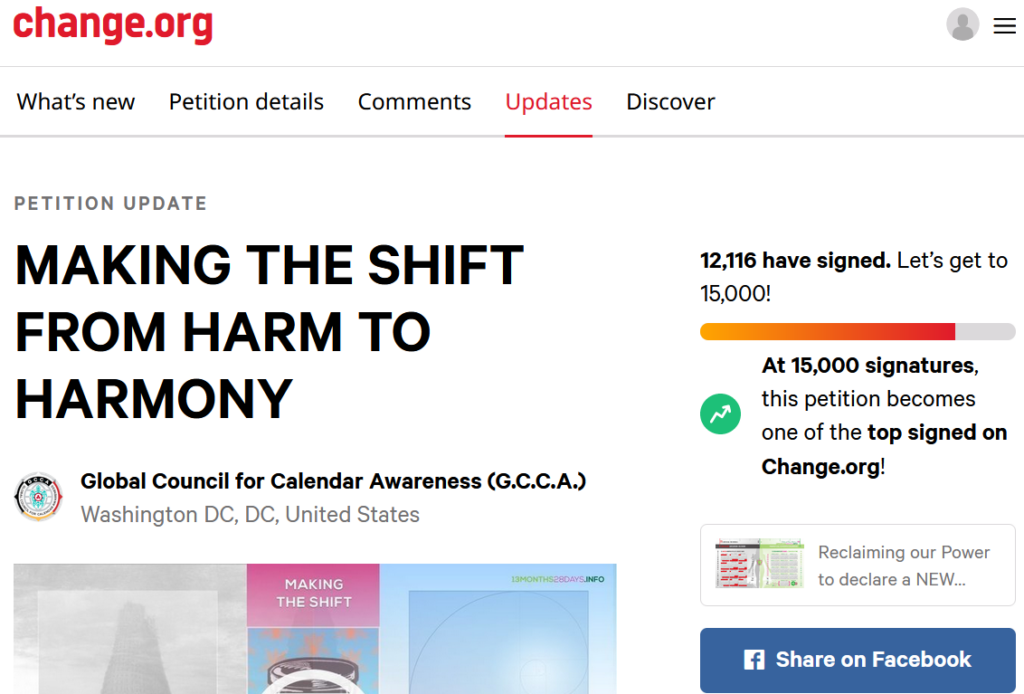
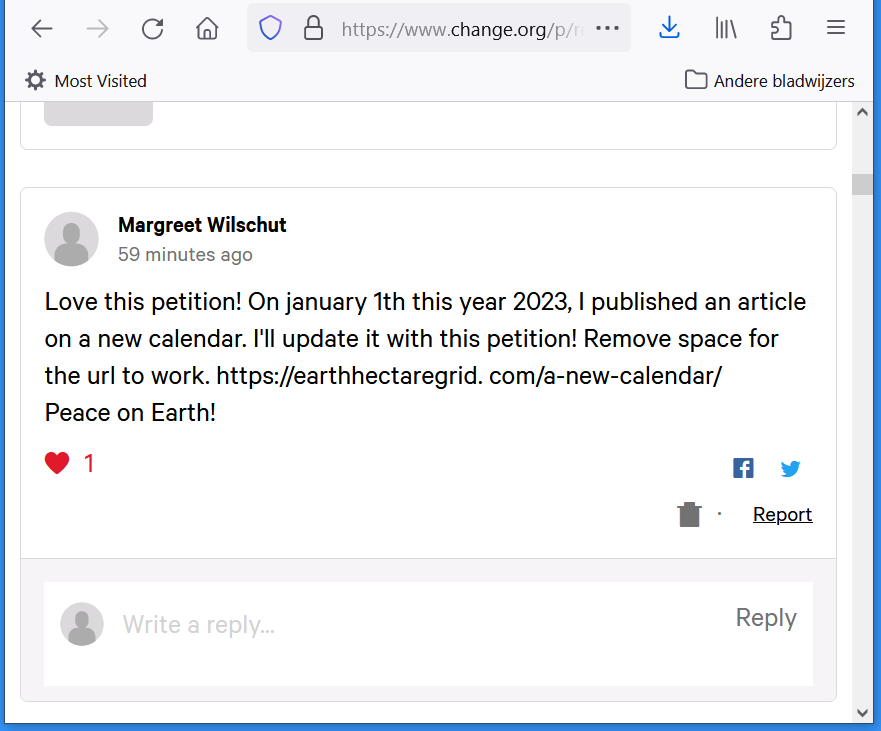
Recommending you do the same with your signature and publish or #hashtag on social media. Curious how fast the next goal will be reached. We can make a difference!
